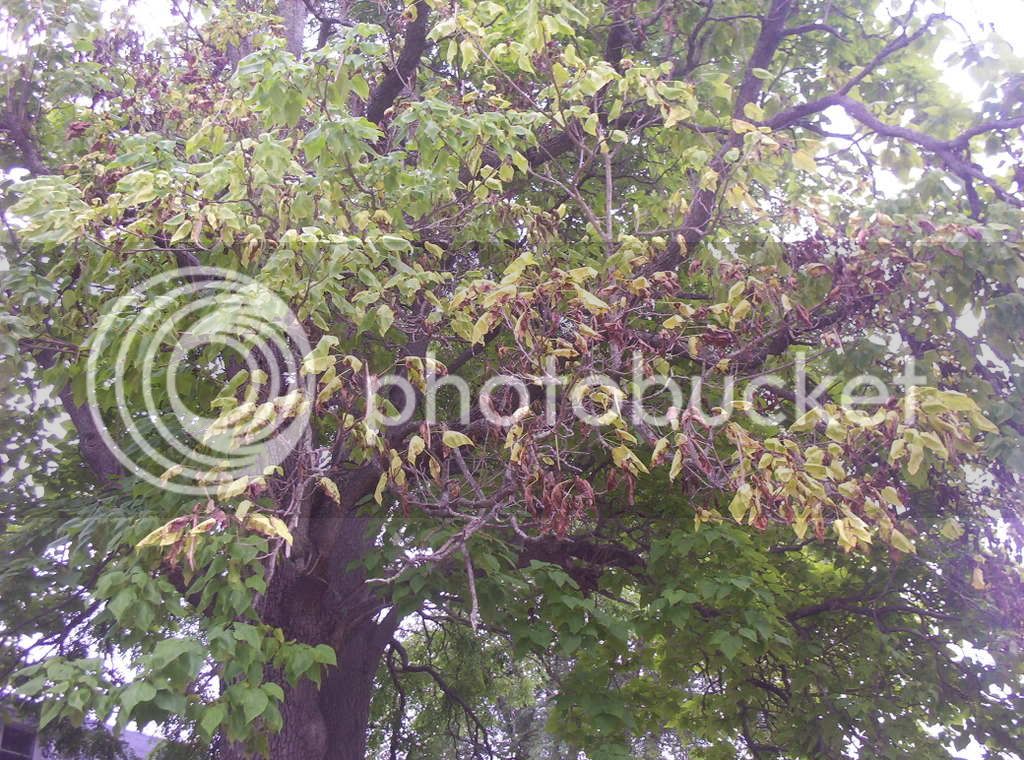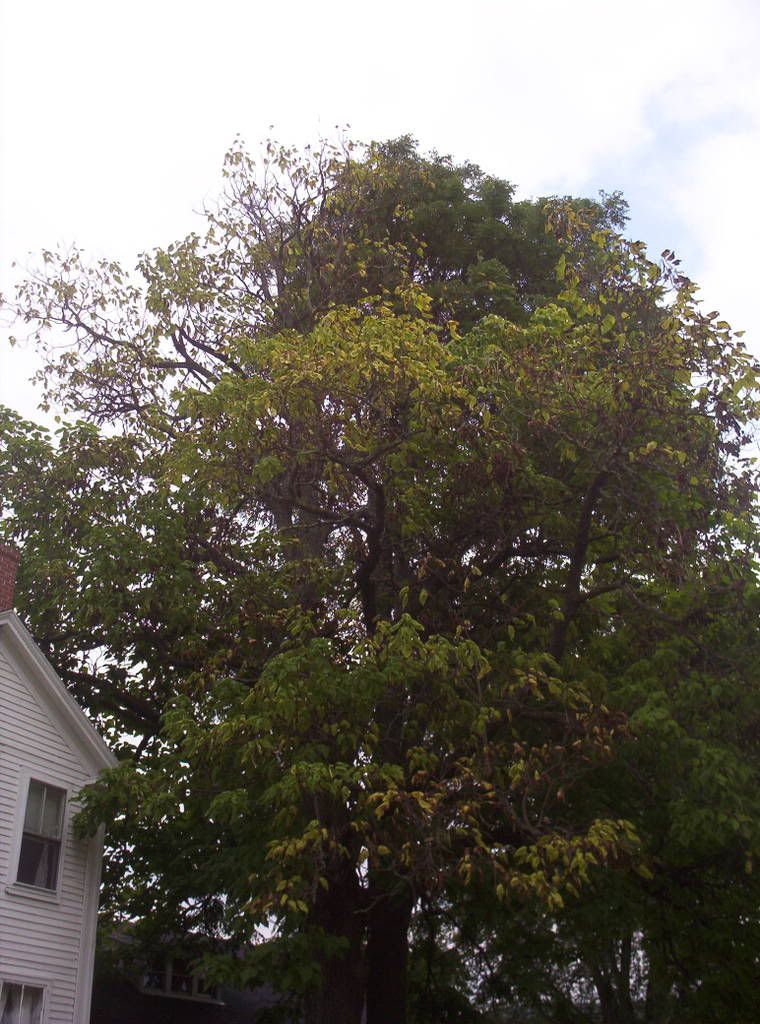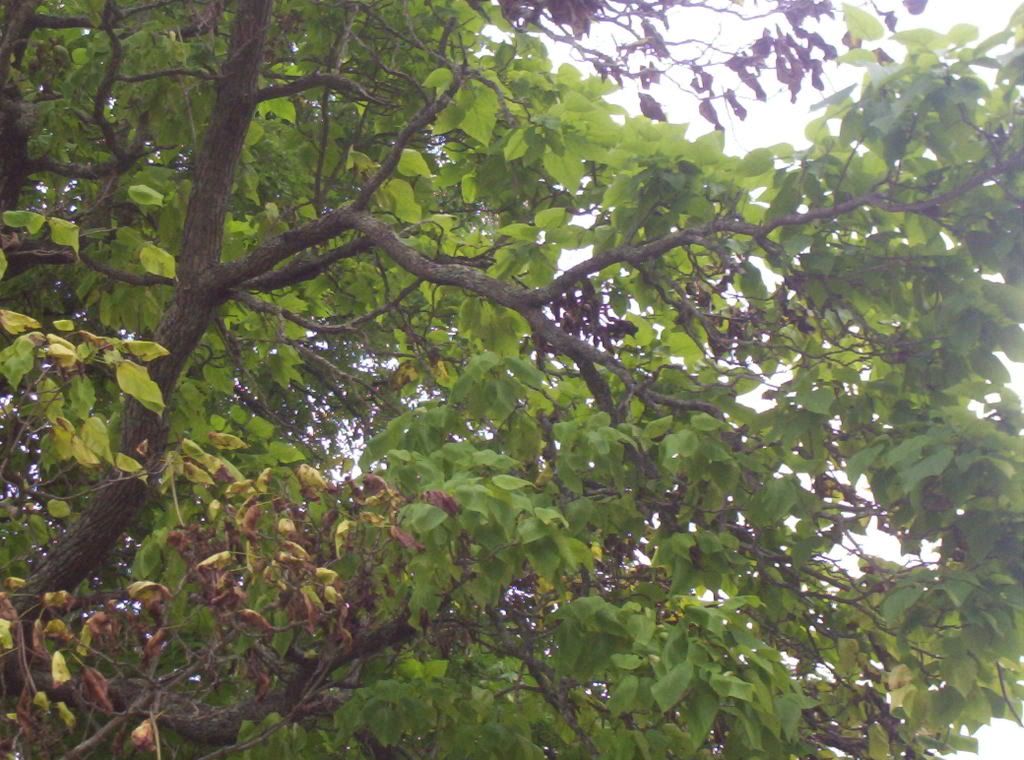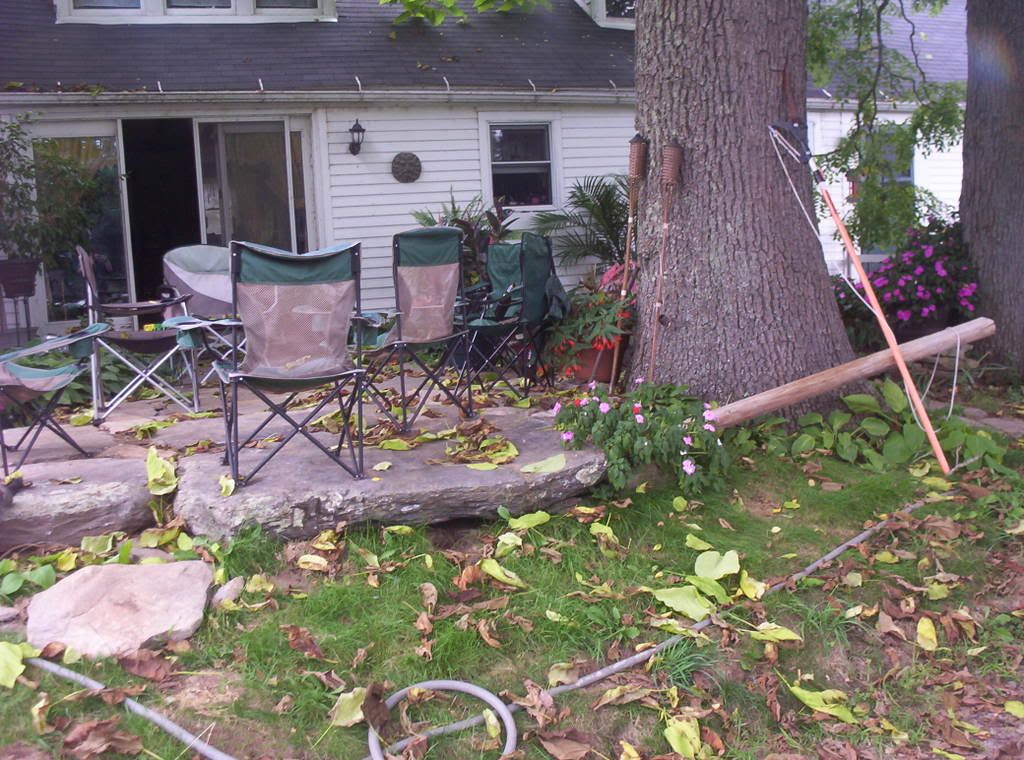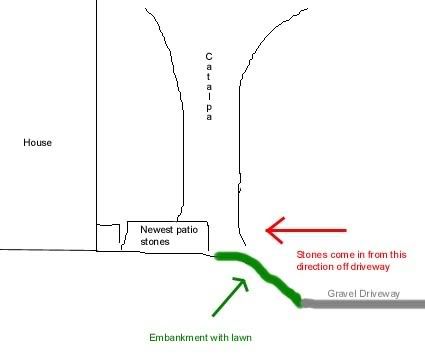benlonghair
ArboristSite Lurker
Greetings folks. Found this site while trying to determine if my new Stihl MS 361 was a good purchace. (I've decided that I made a good choice for long term firewood cutting.)
Anyhow, that's not the point of this post. I've got a very large catalpa in front of my house here in north east connecticut. This tree is ~36"-40" at the base. I've been told it probably dates back to about 1860, which would make sense with the age of my house.
Earlier in the season we noticed it was losing A LOT of leaves. We first attributed it to the wierd shifts in weather we were seeing (flowered almost two weeks before normal this year.) Now I'm starting to see whole limbs dying off, leaves first wilting then turning brown while still on the tree. Leaves have started dropping again, although not as severe as eariler this summer.
In searching the net for what is wrong with it, I came across several articles mentioning Verticillium wilt, which is apparently caused by a fungus. I have been building a patio under the tree, but due to the size of stones and the fact that I didn't want to disturb the roots I opted to start at ground level and build up for stones that weren't as thick. There was very minimal root damage. (I don't think I ever cut a root that was bigger than my index finger or that was gowing anymore than 2" below the ground.)
I'm more than a little worried about the tree for a couple reasons. It's an amazing shade tree, for one. You can sit under it in all but the heaviest rain storms and not get wet for half an hour. The second reason for concern is the fact that if it were to become unhealthy and fall on it's own, it would only have about a 35-40* arc where it wouldn't destroy a building.
Here's my question. If, in fact, it has verticillium wilt, is there anything, short of cutting it down, that I can do for the tree? If I take off all the affected limbs it'll be about 60% of the tree.
Thanks for any help offered.
EDIT: If it will help I will post pics when I get home tonight.
Anyhow, that's not the point of this post. I've got a very large catalpa in front of my house here in north east connecticut. This tree is ~36"-40" at the base. I've been told it probably dates back to about 1860, which would make sense with the age of my house.
Earlier in the season we noticed it was losing A LOT of leaves. We first attributed it to the wierd shifts in weather we were seeing (flowered almost two weeks before normal this year.) Now I'm starting to see whole limbs dying off, leaves first wilting then turning brown while still on the tree. Leaves have started dropping again, although not as severe as eariler this summer.
In searching the net for what is wrong with it, I came across several articles mentioning Verticillium wilt, which is apparently caused by a fungus. I have been building a patio under the tree, but due to the size of stones and the fact that I didn't want to disturb the roots I opted to start at ground level and build up for stones that weren't as thick. There was very minimal root damage. (I don't think I ever cut a root that was bigger than my index finger or that was gowing anymore than 2" below the ground.)
I'm more than a little worried about the tree for a couple reasons. It's an amazing shade tree, for one. You can sit under it in all but the heaviest rain storms and not get wet for half an hour. The second reason for concern is the fact that if it were to become unhealthy and fall on it's own, it would only have about a 35-40* arc where it wouldn't destroy a building.
Here's my question. If, in fact, it has verticillium wilt, is there anything, short of cutting it down, that I can do for the tree? If I take off all the affected limbs it'll be about 60% of the tree.
Thanks for any help offered.
EDIT: If it will help I will post pics when I get home tonight.
Last edited:





